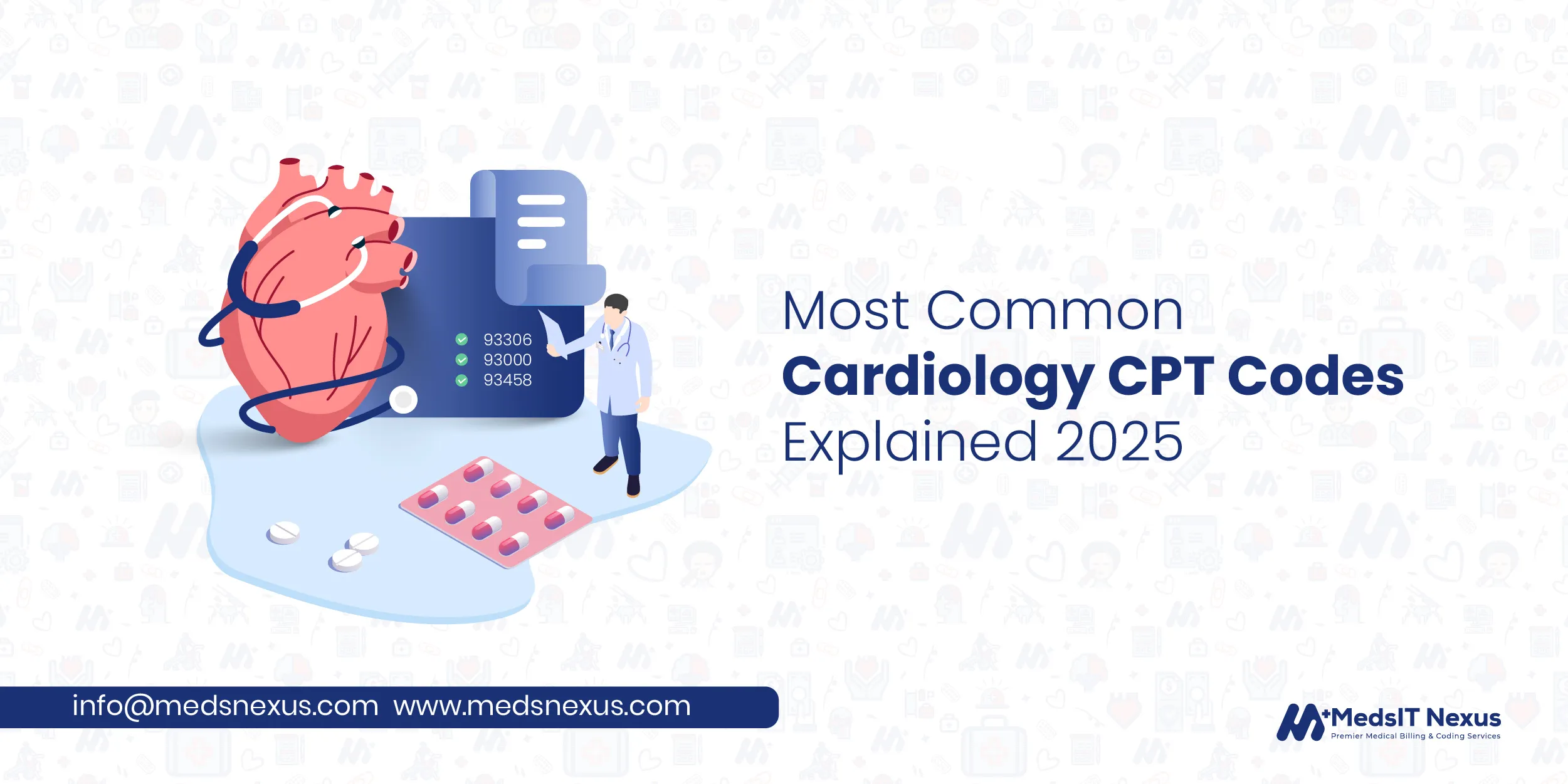Established Patient Visit CPT Codes in Urgent Care Billing

Distinguishing between established and new patients in urgent care is of significant importance. Failing to do so will result in denied claims as both have their distinct coding protocols. These distinct coding protocols exist because the level of care and the complexity of the medical visit can differ between new and established patients. When seeing a new patient, the healthcare provider typically needs to spend more time gathering information about the patient's medical history, establishing a relationship, and understanding their health needs. On the other hand, with established patients, the provider already has a familiarity with the patient's history and ongoing care, which may require less time and effort. In the previous blog we discussed in detail about the difference between new and established patients and how and when to use new patient visit CPT codes. However in this blog we will discuss levels of established patient visit CPT codes in Urgent Care and when to use them.
What is E/M Coding?
The E/M (Evaluation and Management) coding system is a standardized way for healthcare providers to document and bill for office visits, consultations, and other outpatient services. It categorizes visits based on the complexity of the patient's condition, the history taken, the examination performed, and the medical decision-making involved.
E/M Codes for Urgent Care Established Patients
Urgent care centers primarily use outpatient E/M codes (99202-99215) to bill for established patient
visits. In 2023, the E/M coding system transitioned to focus on MDM instead of time spent with the
patient. However, total time on the day of the visit can still be a supporting factor for code
selection. These codes differ from emergency department (ED) E/M codes, which are not used in urgent
care settings. Here's how E/M codes determine the appropriate CPT code for an established patient visit
in urgent care:
The E/M code is based on a point system. Providers assign points based on three key areas:
- History: This considers the comprehensiveness of the medical history taken from the patient. A straightforward, focused history earns fewer points than an expanded, detailed one.
- Examination: This evaluates the extent of the physical examination performed by the provider. A limited exam with minimal organ system review receives less credit compared to a comprehensive exam covering multiple systems.
- Medical Decision-Making: This assesses the complexity of the medical decisions made by the provider based on the patient's condition. Low-risk decisions with straightforward treatment plans earn fewer points than situations requiring complex management strategies and high-risk interventions.
The number of points earned determines the specific E/M code. Higher point totals correspond to more complex visits (e.g., 992013 for moderate complexity). The E/M code, along with any additional procedure codes, is used to submit a claim to the insurance company for reimbursement.
Established Patient CPT code 99211 (5 minutes)
In an urgent care environment, CPT code 99211 applies to established patient visits with minimal medical
complexity and requiring a brief encounter with a healthcare professional. Here's how it translates to
urgent care situations. Suppose a patient arrives for a follow-up visit after completing a course of
antibiotics for a mild upper respiratory infection. They report feeling mostly recovered and just need
to check-in to ensure everything is clear.
Coding Rationale: This scenario likely falls under 99211 because:
- The presenting problem (residual symptoms from a previously diagnosed infection) is minimal.
- The visit involves confirming recovery, which is a straightforward task requiring minimal history and a brief examination.
- The entire encounter, including documentation, can likely be completed within 5 minutes.
Important Considerations for Urgent Care
While 99211 is an option, urgent care typically sees patients with conditions that require a bit more evaluation compared to a routine primary care visit. So, this code might be less frequently used than higher-level E/M codes (e.g., 99203) that reflect more complex urgent care needs. If a patient presents with an urgent condition requiring a more thorough examination and decision-making, a higher E/M code is necessary to accurately reflect the service provided.
Established Patient CPT code 99212 (10 minutes)
CPT code 99212 is used for established patient visits with an expanded problem-focused history and examination for a self-limited or minor issue. Compared to 99211, this code reflects a slightly more complex encounter.
When to Use 99212
- Expanded Problem-Focused History: The provider gathers a more detailed medical history beyond just the chief complaint. This might include past medical history, family history, or additional details about the current issue.
- Expanded Problem-Focused Examination: The examination focuses on the specific body area or system related to the presenting problem but may delve a bit deeper than a brief examination (used in 99211).
- Straightforward Medical Decision-Making: The provider makes straightforward treatment decisions based on the information gathered.
Examples of Urgent Care Visits Qualifying for 99212
A patient visits with a sprained ankle. The provider gathers information about the mechanism of injury, pain level, and swelling. They perform a focused examination of the ankle joint, checking for tenderness, range of motion, and stability. Based on the assessment, the provider diagnoses a sprain and provides treatment recommendations like rest, ice, compression, and pain medication.
Billing for Nurse Visits
In some cases, a nurse or other qualified healthcare professional might manage an established patient visit that falls under 99212 in urgent care. However, billing for such visits depends on the service provided and specific insurance regulations:
- Incident-to Service Billing: If the nurse manages the visit under the direct supervision of a physician who initiated the service as part of a continuing plan of care, the visit can be billed using the physician's E/M code (99212 in this case). This is common under Medicare guidelines.
- Direct Supervision Requirements: Insurance companies may have specific requirements for direct supervision during the visit, which can vary.
- Private Payer Policies: Always check with the patient's insurance company to understand their specific policies regarding nurse visit billing in urgent care settings.
Established Patient CPT code 99213 (15 minutes)
This code applies to established patients (seen within the last 3 years) who require an urgent care visit for a problem with moderate complexity. Here's a breakdown:
- Established Patient: The patient has a prior medical history with the urgent care facility or any provider within the group.
- Problem-Focused History & Exam: The visit focuses on a specific current complaint. The doctor gathers a focused history and performs an exam relevant to that complaint.
- Moderate Complexity Medical Decision Making: The case requires more than straightforward decisions but isn't as intricate as highly complex situations. This might involve assessing one or more chronic conditions, acute illnesses, or a stable chronic condition with a worsening symptom.
Example Scenario for Using CPT Code 99213
An established patient visits with a sore throat, fever, and cough. The doctor reviews the patient's medical history (focusing on past illnesses), conducts a focused exam of the ears, nose, and throat, and diagnoses strep throat. This scenario involves a problem-focused history, exam, and moderate decision-making (antibiotic selection), making 99213 appropriate
Common Reasons for Denial of 99213 Claims
- Insufficient Documentation: Lack of detailed notes on history, exam, or medical decision-making can lead to denials. Ensure your documentation aligns with the chosen code.
- Inaccurate Coding: Selecting 99213 for a more complex visit (higher code) or vice versa will likely be denied.
- Missing Modifiers: Specific modifiers might be required for services included in the visit (e.g., injections).
Established Patient Visit CPT Code 99214 (25 minutes)
In urgent care settings, CPT code 99214 signifies an established patient visit with a more complex
medical presentation compared to 99213. Here's a breakdown of when to use it, factors influencing
selection, and an urgent care example:
This code applies to established patient visits with:
- The presenting complaint is more intricate than those managed with 99213.
- The doctor gathers a more extensive medical history beyond the current complaint. This might involve past medical conditions, medications, allergies, and social factors impacting the issue.
- A broader physical exam is performed, encompassing various systems relevant to the presenting complaint and potential underlying conditions.
Factors Influencing Code Selection (Documentation Complexity)
In urgent care billing, choosing the code 99214 relies heavily on detailed documentation. This means that when recording the patient's history, it's important to include information about past illnesses, surgeries, medications, allergies, and any social factors that might contribute to their current complaint. For the examination part, it's crucial to document a thorough check-up, covering all the relevant body systems related to the patient's issue and any potential underlying conditions. When it comes to medical decision making, it's necessary to clearly explain the complexity of the decisions made. This includes outlining the thought process behind considering different diagnoses, potential conditions, and the treatment options considered. All these aspects of documentation help ensure accurate billing and appropriate coding for the services provided in urgent care settings.
Urgent Care Example for Using CPT Code 99214
A 55-year-old established patient with a history of diabetes and hypertension visits with sudden chest pain radiating to the left arm, along with shortness of breath and sweating. The doctor performs a detailed history, including past medical history, current medications, and risk factors. A comprehensive physical exam is conducted, including checking vital signs, heart sounds, lung sounds, and blood sugar levels. Based on the findings, the doctor considers various possibilities like heart attack, angina, or a combination of factors. Electrocardiogram (ECG) and blood tests are ordered to further assess the situation. Here, the complexity of the presenting complaint, expanded history, comprehensive exam, and need for intricate decision-making all support using CPT code 99214.
Established Patient Visit CPT Code 99215 (40 minutes)
What it Represents
- CPT code 99215 signifies the most complex evaluation and management (E/M) visit for established patients.
- It involves a comprehensive history, a comprehensive examination of multiple body systems, and medical decision making of the highest complexity.
Why Rarely Used in Urgent Care
Urgent care settings are designed for prompt assessment and treatment of acute illnesses or injuries. Here's why 99215 is rarely used in this environment:
- Urgent care prioritizes addressing urgent health concerns that typically require a more focused approach.
- Urgent care visits are often time-sensitive, limiting the ability to conduct a comprehensive history and exam required for 99215.
- Cases managed in urgent care usually fall under the complexity range of 99213 (moderate complexity) or 99214 (moderate to high complexity).
Outsource Urgent Care Billing Service to MedsIT Nexus
MedsIT Nexus is a well-established medical billing and coding company with a long-standing reputation for streamlining healthcare processes. Our experts are well-versed in coding industry rules and regulations and refrain from activities that bring a bad name to your practice. Our innovative approach is backed by cutting-edge facilities to ace the critical documentation step. Our coders then use this information to generate accurate claims and help you receive timely reimbursements. MedsIT Nexus believes in compliance and transparency and keeps you updated at every process step. Our auditing team ensures that no mistake goes unnoticed and takes measures to prevent errors from happening again.
Marshall-Russ, Technical Author -
Healthcare IT & Data Systems Analyst at MedsIT Nexus
Edit Technical documentation, workflow automation insights, and data-driven RCM improvement publications following our standard publication protocols.
Other Editors
Samuel White - Dr. Sana Pervez -Related Posts

New Patient Visit CPT Codes in Urgent Care Billing

CPT 00300: Anesthesia for Integumentary System




